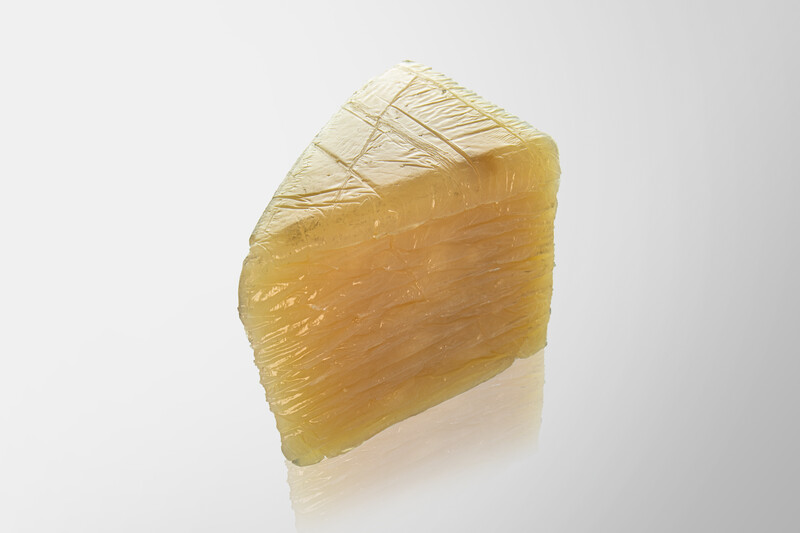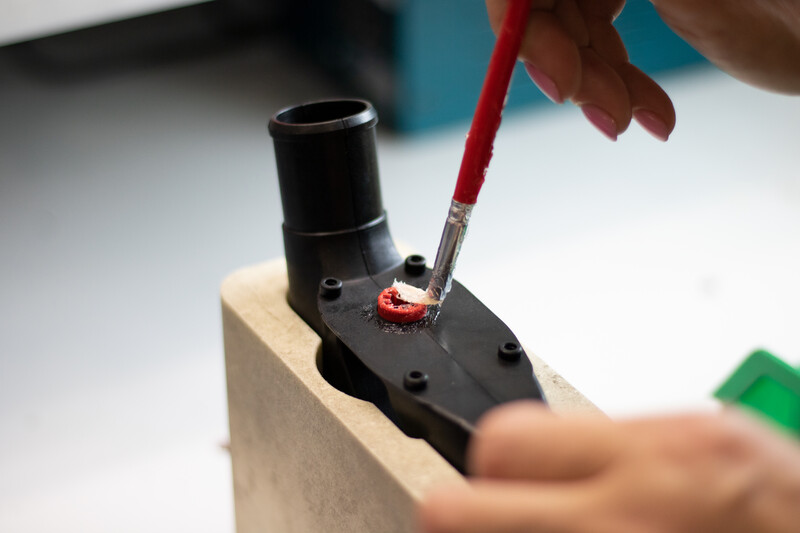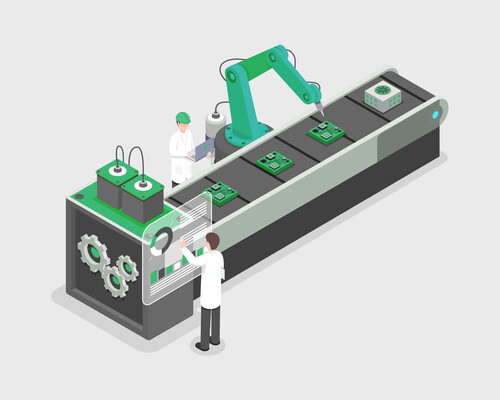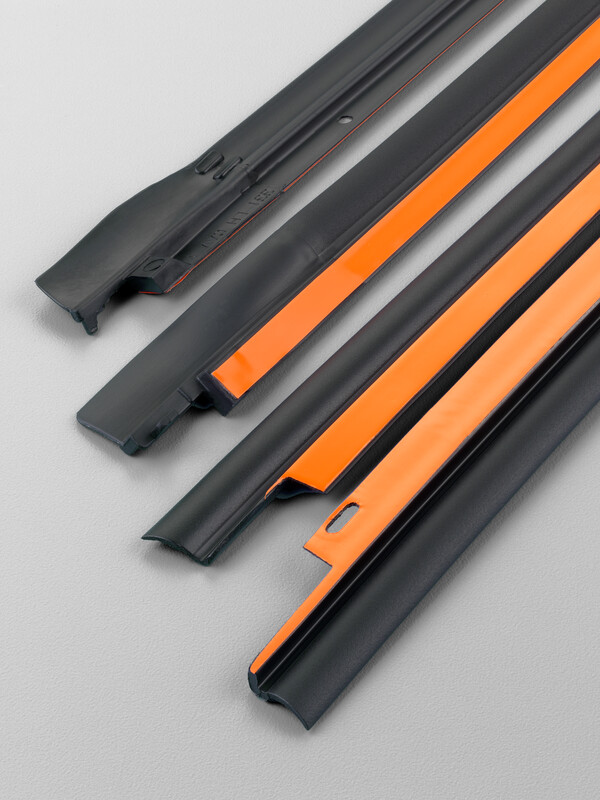Material selection is not the only lever for influencing the characteristics of a rubber or plastic product. After the article has been manufactured, it can also be subjected to a surface finishing to improve its functional or aesthetic properties. There are various options here, depending on the material.
The following processes are universally applicable and suitable for most plastics and elastomers.
In fluorination, the component is exposed to a gaseous fluorine mixture. This initiates a chemical reaction that partially replaces the hydrogen atoms on the material surface with fluorine atoms. The process makes the material more slippery and improves its resistance to weathering and temperature. At the same time, the component becomes less sensitive to certain chemicals (e.g. solvents).
The fluorination process changes the chemical composition of the material surface, but does not penetrate deep into it. Thus, the basic properties of the material are retained. Furthermore, the material surface can only be completely gassed. Partial application is not possible.
There are various methods of surface finishing to reduce the frictional resistance of a plastic or elastomer. Examples include bonded coatings and sliding polymers. What all processes have in common is that they improve the sliding properties, increase wear resistance and make the material less sensitive to static fracture.
In the case of bonded coatings, partial application is easily possible by treating only the desired areas. In the case of slip polymers, the substance is added to the material mixture.
In flocking, man-made fibers are anchored in a previously applied layer of adhesive with the aid of an electric field and electrostatically aligned. The result is a uniform textile surface that offers various advantages. The flocking of a component …
It is possible to flock surfaces partially. To do this, simply cover the areas that are not to be treated before applying the adhesive.
In many industrial companies, products with self-adhesive systems are common as an assembly aid or as a permanent self-adhesive film to allow precise positioning of the item. They come in two varieties: Mounting aids, which have a low adhesive force and are used for positioning, and applied adhesive films, which remain permanently bonded to the material and have a high adhesive force. These foils are applied to the corresponding components in a second work step.
Mechanical processes for surface finishing (elastomers) include grinding. This makes it possible, for example, to achieve the desired dimensional accuracy in sheet goods.
Some surface finishing methods are not suitable for elastomers, as these are softer than thermoplastics or thermosets and have a lower surface energy. The following processes are therefore only used for finishing in the plastics sector.
Metallization involves coating a plastic surface with a thin layer of metal. The most common process is electroplating, but thermal spraying or chemical or physical gas deposition are also sometimes used.
Metallization mostly serves decorative purposes, but can also improve the material properties, for example by increasing conductivity or wear resistance. The most common metal for this process is chromium, but other materials are also conceivable, for example gold, silver or nickel.
Printing on soft materials (including many elastomers) is relatively difficult. For harder plastics, however, there are a number of viable processes that can sometimes handle more complex geometries, such as pad printing and laser marking. Alternatively, some plastics can also be embossed.
Cosmetic coatings are possible in the plastics sector, e.g. to achieve optical effects or for advertising reasons. In some cases, it is necessary to pre-treat the surface (e.g. with primer) so that the actual coating adheres better.
Dietmar Barth is a sales field representative with more than 30 years of professional experience. The qualified business economist originally worked in the electronics industry before joining Jäger in 2016.






